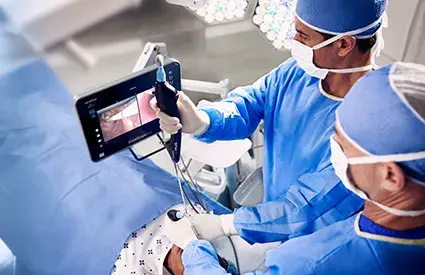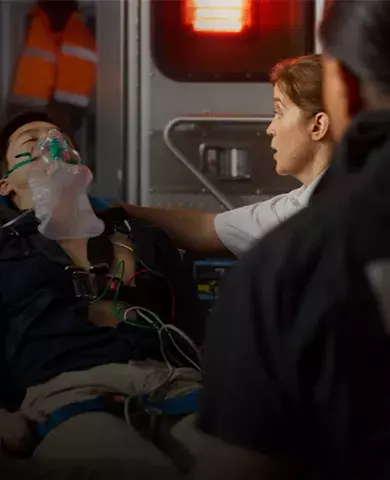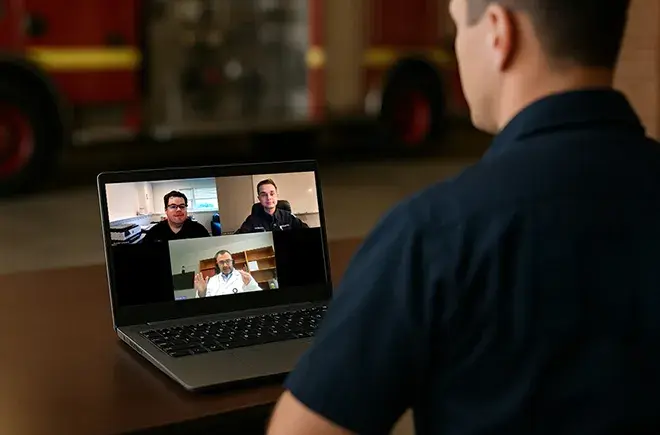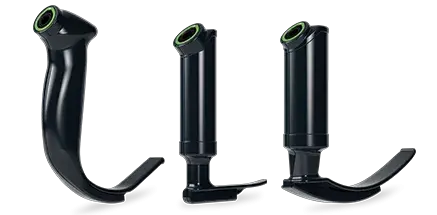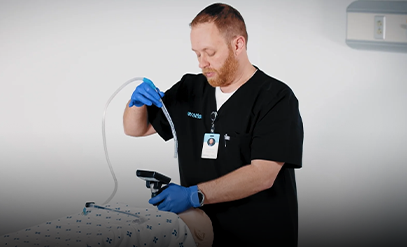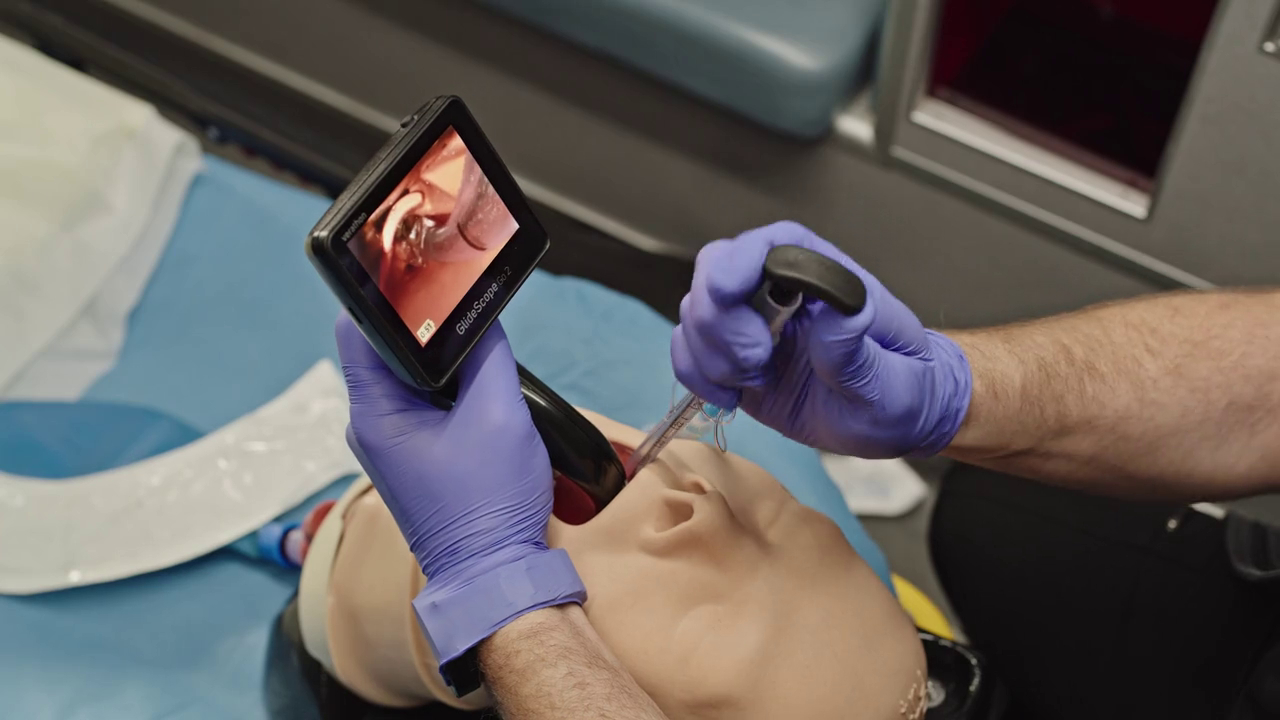GlideScope Performance. Anywhere.
When it comes to airway management in unpredictable environments, you need a device that performs wherever and whenever duty calls. Whether you're intubating roadside, in a helicopter, or during high-pressure moments, the GlideScope® Go™ 2 is built to deliver.
Certified for the toughest EMS environments1 - including ambulances, helicopters and fixed-wing aircraft, the GlideScope Go 2 is designed with features that support you in the field. Its rugged design includes a high-resolution Corning® Gorilla®2 Glass display and an IP67 rating3 for dust and liquid submersion.
Want to see it in action?
Game-Changer or Overhyped?
Rethinking Direct and Video Laryngoscopy in EMS.
Is the debate on pre-hospital airway management finally settled? This compelling fireside chat dives into the pressing question: has video laryngoscopy (VL) outpaced direct laryngoscopy (DL) as the go-to approach?
Customer Story: Essex & Herts Share Their GlideScope Experience
I was really impressed. It feels like a normal blade that I'm used to. I thought the weight was going to be an issue, but it wasn't. The screen was really good quality. I tried it outside, and inside and it made no difference. I'm really pleased with what I experienced.
James Mullett, Critical Care Paramedic, Essex & Herts Air Ambulance
Exceptional Visualization for Critical Outcomes
For emergency medical providers, every moment matters. When a patient’s airway needs to be secured immediately, you need a device that offers reliability and clarity. Recent studies in hospital settings have shown that video laryngoscopy significantly improves first-pass intubation success rates compared to traditional direct laryngoscopy4.
The GlideScope Go 2 builds on this evidence, bringing advanced visualization technology into the field. With a high-resolution screen, EMS providers can more easily visualize the airway and intubate effectively no matter the setting—from chaotic roadside emergencies to remote and confined environments—empowering you to perform with confidence, wherever you are.
Versatility Meets Ease-of-Use
GlideScope Go 2 empowers EMS providers to intubate even under pressure. With one of the most comprehensive single-use video laryngoscope portfolios available—including hyperangulated, Mac, and Miller blade options—it ensures versatility to meet diverse patient airways and EMS needs and the unique demands of EMS professionals.
Key features like auto-record, onboard storage, and video playback make GlideScope Go 2 a valuable tool for EMS teams. These capabilities support quality assurance and improvement programs by enabling continuous review and analysis of intubations, ultimately helping to optimize patient care.
Sustainable and Seamless Compatibility
See the Go 2 in Action
Helpful Information
Video Laryngoscopy Compared to Augmented Direct Laryngoscopy in Adult Emergency Department Tracheal Intubations: A National Emergency Airway Registry (NEAR) Study
Acad Emerg Med, 2020
Video laryngoscopy used without any augmenting maneuver, device, or technique results in higher first-attempt success than does DL that is augmented by use of a bougie, ELM, ramping, or combinations thereof.
The Use of a Video Laryngoscope by Emergency Medicine Residents Is Associated With a Reduction in Esophageal Intubations in the Emergency Department
Acad Emerg Med, 2015
The use of a video laryngoscope (VL) by emergency medicine (EM) residents during an intubation attempt in the emergency department (ED) was associated with significantly fewer esophageal intubations (EIs) compared to when a direct laryngoscope (DL) was used. Patients who had inadvertent EIs had significantly more adverse events than those who did not have EIs. EM residency training programs should consider using VLs for ED intubations to maximize patient safety when EM residents are performing intubation.

